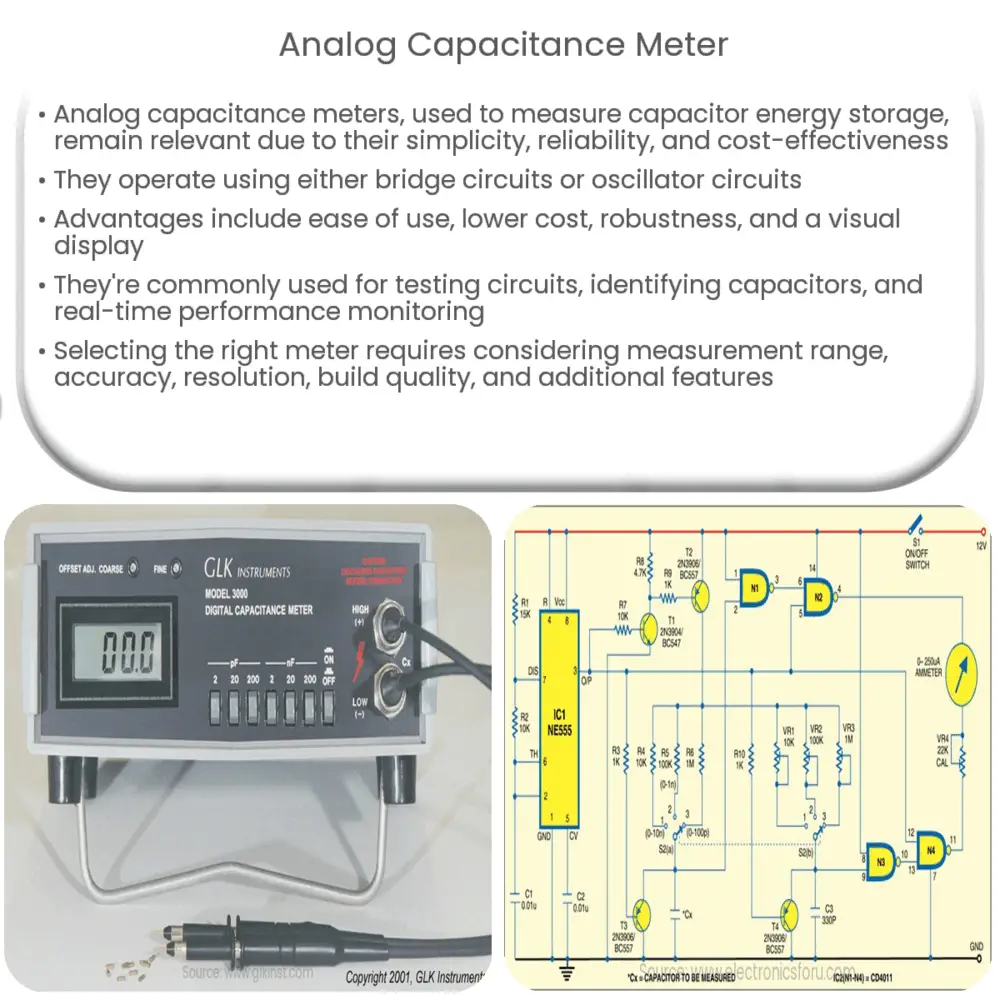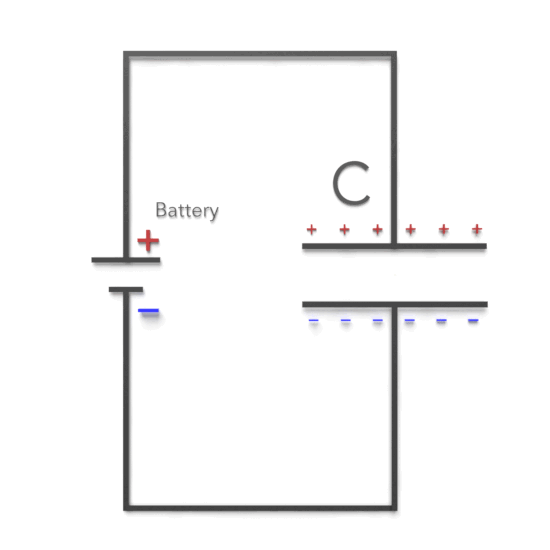Analog capacitance meters are reliable, easy-to-use devices for measuring capacitor values in electronic circuits and applications.

Analog Capacitance Meter: An Introduction
Analog capacitance meters are electronic devices designed to measure the capacitance of capacitors, which are fundamental components in many electronic circuits. Capacitors store energy in the form of an electric field and are widely used in various applications, such as filtering, energy storage, and signal coupling. Analog capacitance meters, despite the advent of digital technology, continue to have a place in the electronics world due to their simplicity, reliability, and ease of use.
Working Principle of Analog Capacitance Meters
Analog capacitance meters typically operate using a bridge circuit, which consists of a set of four resistors or capacitors, arranged in a diamond shape. The bridge circuit helps to balance the input and output voltages, allowing for the accurate measurement of capacitance. The unknown capacitor is connected to one side of the bridge, while the other side is connected to a known capacitor or resistor. By adjusting the known component’s value, the user can balance the bridge and determine the unknown capacitance value.
Another common method employed by analog capacitance meters is the use of an oscillator circuit. In this approach, the capacitor being measured is integrated into an oscillator circuit, and its frequency is directly proportional to the capacitance value. By measuring the frequency of oscillation, the capacitance value can be calculated using a simple formula.
Advantages of Analog Capacitance Meters
Although digital capacitance meters are widely available and offer higher accuracy and functionality, analog capacitance meters still have a few advantages that make them useful in certain applications:
- Simple and easy to use: Analog capacitance meters often have fewer controls and a more straightforward interface, making them suitable for beginners and hobbyists.
- Lower cost: The simplicity of analog capacitance meters often results in a lower price point compared to their digital counterparts.
- Reliability: Analog meters are typically more robust and less prone to failure due to their simpler design and construction.
- Visual representation: The analog display, usually in the form of a needle, provides a visual representation of the measured value that can be easier to interpret for some users.
Common Applications of Analog Capacitance Meters
Analog capacitance meters find use in various applications, including:
- Testing and troubleshooting electronic circuits
- Identifying and measuring unknown capacitors
- Monitoring capacitor performance in real-time
- Checking capacitors for leakage or other defects
- Comparing capacitance values for matching components in a circuit
Selecting the Right Analog Capacitance Meter
When choosing an analog capacitance meter, several factors should be considered to ensure the right device is selected for the specific application:
- Measurement range: The meter should have a capacitance range that covers the values of the capacitors being measured. Check the specifications to ensure it meets your requirements.
- Accuracy: Accuracy is crucial in determining the reliability of measurements. Choose a meter with an accuracy level suitable for your application.
- Resolution: Resolution refers to the smallest change in capacitance the meter can detect. A higher resolution provides more precise measurements.
- Build quality: A well-built meter is more likely to provide consistent and reliable measurements over time. Look for devices made from high-quality materials and reputable manufacturers.
- Additional features: Some analog capacitance meters include extra features, such as built-in calibration or zero adjustment. These can be useful for improving measurement accuracy and simplifying the user experience.
Maintaining Your Analog Capacitance Meter
To ensure the longevity and accuracy of your analog capacitance meter, proper maintenance and care are necessary:
- Regular calibration: Periodically calibrate your meter to maintain its accuracy. This can be done using known capacitors or a calibration standard.
- Proper storage: Store your meter in a dry, dust-free environment, and avoid exposure to extreme temperatures or humidity. This will help prevent damage and ensure reliable measurements.
- Cleaning: Clean the meter and its probes regularly to remove dirt, dust, or other contaminants that could affect the accuracy of the measurements.
- Battery replacement: If your meter is battery-powered, replace the batteries regularly to avoid inconsistent readings or damage to the device due to battery leakage.
- Proper handling: Handle your meter with care to avoid accidental damage. Avoid dropping the device, and use the appropriate protective cases when transporting it.
Conclusion
Analog capacitance meters, despite being overshadowed by digital alternatives, remain a valuable tool for hobbyists, technicians, and engineers alike. Their simplicity, reliability, and affordability make them an appealing choice for various applications, such as troubleshooting electronic circuits and identifying unknown capacitors. By selecting the right meter and maintaining it properly, users can enjoy accurate and reliable capacitance measurements for many years to come.



